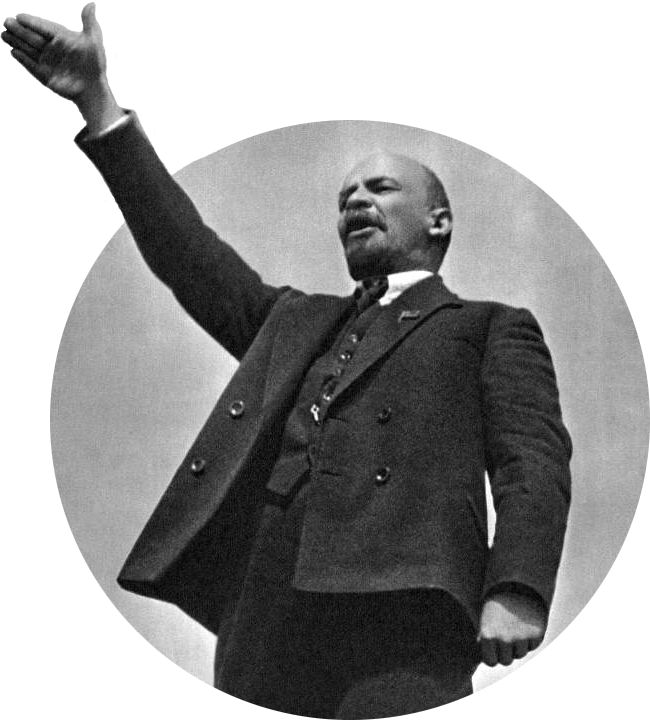m (Added links, added message box.) Tag: Visual edit |
m (Emboldening subject line.) Tag: Visual edit |
||
| Line 1: | Line 1: | ||
{{Message box/Externalarticlecleanup|date=August 2022}} | {{Message box/Externalarticlecleanup|date=August 2022}} | ||
Dual Power, this was the name of a peculiar phenomenon in the 1917 revolution in [[Russian Soviet Federative Socialist Republic (1917–1991)|Russia]], | '''Dual Power''', this was the name of a peculiar phenomenon in the 1917 revolution in [[Russian Soviet Federative Socialist Republic (1917–1991)|Russia]], | ||
which consisted in the fact that “alongside the provisional government, the government of the [[bourgeoisie]], a still weak, embryonic, but still undoubtedly existing and growing other government took shape: the Soviets of Workers' and Soldiers' Deputies” ([[Lenin]]). | which consisted in the fact that “alongside the provisional government, the government of the [[bourgeoisie]], a still weak, embryonic, but still undoubtedly existing and growing other government took shape: the Soviets of Workers' and Soldiers' Deputies” ([[Lenin]]). | ||
Revision as of 05:33, 7 November 2022
 | Some parts of this article were copied from external sources and may contain errors or lack of appropriate formatting. You can help improve this article by editing it and cleaning it up. (August 2022) |
Dual Power, this was the name of a peculiar phenomenon in the 1917 revolution in Russia, which consisted in the fact that “alongside the provisional government, the government of the bourgeoisie, a still weak, embryonic, but still undoubtedly existing and growing other government took shape: the Soviets of Workers' and Soldiers' Deputies” (Lenin).
Arising in the first days of the February Revolution [Feb 27 (March 12)] the Petrograd Soviet of Workers' Deputies (see), relying on the vast majority of the people, on the proletariat and the peasantry dressed in soldiers' greatcoats and which was the actual power during this period, met with a new contender for power: the bourgeois Provisional Executive Committee of the State Duma (see), formed on the same day on February 27 (March 12) and striving to take power in the country in their hands. So in Russia there was formed a movement: a bourgeois government that sought to delay the course of the revolution and establish a bourgeois order in the country, and a revolutionary government — the Soviet of Workers' Deputies. But despite the fact that the real power was behind the Soviet, the latter, under the control of their petty-bourgeois leaders, entered into an agreement with the Provisional Executive Committee of the State Duma and transferred actual power in the country to the Provisional Government formed on March 2 (15) (see Provisional government in Russia in 1917). To control the faithful government and to establish permanent communication with it — the Executive Committee of the Petrograd Soviet — a Contact Commission was formed (see) consisting of: Skobelev, Stekloi, Sukhanov, Chkheidze and the officer Filippovsky (S-R). This Contact Commission, which Lenin regarded as a typical product of petty-bourgeois compromise, turned out to be a stillborn institution and did not lead to any results. In the provinces, the same dual power was established: on the one hand, the power of the commissars of the Provisional Government, city and zemstvo governments, general civic committees, etc., and on the other, the power of local Soviets. The degree of real use of power by local Soviets was very diverse: in large industrial centers the Soviets actually possessed full power, in small ones they sometimes turned into an insignificant appendage to the bourgeois organs of power. "There exists side by side, together, at the same time, the rule of the bourgeoisie (the government of Lvov and Guchkov), and the revolutionary democratic dictatorship of the proletariat and the peasantry, voluntarily surrendering power to the bourgeoisie, voluntarily turning into its appendage" (Lenin). Insufficient organization and consciousness of the masses and the conciliatory policy of the petty-bourgeois Menshevik and Socialist-Revolutionary parties in the leadership of the Soviets led to the fact that in July 1917, in essence, the autocracy of the bourgeoisie was created in Russia. "The dual power is over... Power passed in a decisive place into the hands of the counter-revolution," wrote Lenin after the July days (see). Dual power, which had recovered after the Kornilovism, was already of a different character: the Petrograd Soviet, conquered by the Bolsheviks, was turning into the organizational center of the proletariat and the peasantry under its leadership who fought for power and opposed itself as power to the bourgeois Provisional Government, which was finally liquidated by the October Revolution (for more details, see Soviets of Workers' Deputies, February Revolution).
Ltsm.: Lenin V. I., Works, 2nd ed., Vol. XX, p. 94, M. - L., 1927, On dual power; ibid., p. 97, Letters on tactics; ibid., p. 109, The Tasks of the Proletariat in Our Revolution; ibid, p. 173, Petrograd city-wide conference of the RSDLP from April 27 (14) - May 5 (April 22), 1917; ibid, p. 76 — Speech at a meeting of the Bolsheviks of members of the All-Russian Conference of Soviets R. and S. D. 17 (4) April 1917; ibid., pp. 477-1 All-Russian Congress of Soviets of R. and S. D. June 16 (3) - July 6 (June 23), 1917; Petrograd city-wide and all-Russian conference of the RSDLP (Bolsheviks) in April 1917, Moscow - L., 1925; Essays on the history of the October Revolution, edited by M. N. Pokrovsky, vol. II. M.-L., 1927; Stalin I., On the Way to October, Articles and Speeches, March — October, 1917, 2nd ed., Leningrad, 1925. Source: The Great Soviet Encyclopedia, Vol. 20 (1930), p. 671-672.